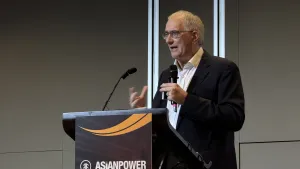
How do CEOs overcome role dilemmas?
CEOs' uncertainties often stem from one or more of five dilemmas, according to McKinsey.
About 100 CEOs from Africa, Asia, Europe, and the Middle East have shared insights through the McKinsey Center for CEO Excellence initiative.
These leaders have discussed both their successes and challenges to explain the complexities of the CEO role during uncertain times.
McKinsey has outlined five common dilemmas faced by these CEOs and their responses to these challenges.

Dilemma 1: Preserving the core whilst innovating for the future
This dilemma is particularly challenging for second- and third-generation CEOs running family businesses, who wish to preserve the family legacy whilst necessarily innovating for the future.
For example, a CEO in Southeast Asia managed to transition his family business by getting buy-in for a new mission statement that balanced old and new business values, making the organisation more customer-centric and data-driven.
“Businesses should keep innovating in the core to deliver and sustain performance, whilst simultaneously building new businesses. Preserving the core requires continued innovation,” Gail Kelly, former CEO of the Westpac Group, said.
Dilemma 2: Delivering short-term results whilst investing in long-term performance
The challenge for CEOs to balance long-term value creation against the pressures of achieving short-term goals is intensified by the often conflicting demands of boards and stakeholders, who typically focus on immediate financial outcomes.
Effective CEOs often maintain a dual focus—managing a portfolio of projects that address both immediate returns and long-term growth. Transparent communication with stakeholders about the realistic timelines and investment needed for these projects is critical to managing expectations and sustaining support for strategic decisions.
Dilemma 3: Managing a team of individual stars versus maximising collective performance
Several CEOs said they had found it difficult to manage individualistic star performers who consistently delivered great results but did not work well with others on the top team.
In hindsight, several CEOs cited not dealing with a toxic high performer fast enough as one of their top regrets. Gail Kelly noted that CEOs sometimes retain an individual for too long instead of admitting that they made a poor choice.
Nazir Razak, founding partner of Ikhlas Capital and former chair and CEO of CIMB Group, emphasised the importance of CEOs managing two types of employees: missionaries, who are committed to the company's mission, and mercenaries, who are driven by personal gain.
He advised adapting management and compensation strategies accordingly and stressed the need for succession planning due to the potentially transient nature of mercenaries. “When the business is going well, the mercenary may be the easiest person to put in the role, but you need to have a clear succession plan as you never know when they will leave.”
Dilemma 4: Empowering others whilst maintaining control of outcomes
Delegation is a critical skill for CEOs, balancing the need to empower their teams whilst retaining ultimate accountability for company results.
This balance is challenging, especially for new CEOs transitioning from hands-on roles to broader, strategic positions.
Even for longer-tenured CEOs, deciding how and where to cede control can be an ongoing challenge. For example, one experienced banking CEO in Southeast Asia admitted he still has trouble stepping away because of concerns that his team might make a mistake. As a result, he regularly stays late in the office to check detailed reports for possible errors.
Creating a supportive environment where teams can learn from low-risk failures is essential for fostering both accountability and growth within the company. Moreover, delegating day-to-day tasks to a trusted group of direct reports can free CEOs to focus on overarching strategic issues. This delegation also allows team members who are experts in their domains to make informed decisions.
Peter Olson, former CEO of Random House, said one of his major challenges as a CEO was “learning to drop the perfectionism and focus on the 95%of work that is done well, and not on the other 5%.”
“A period of transformation may call for a more authoritative approach, after which the CEO could relinquish a degree of control,” Razak said.
Dilemma 5: Becoming fully immersed in the CEO role whilst retaining personal identity and sense of purpose
Most leaders want to perform at the highest possible level, which requires an intense degree of focus, commitment, and resilience. However, many experienced CEOs said that at some point, they had realised they needed to find a sustainable balance to excel in their role.
Strategies for maintaining this balance include carving out dedicated family time and staying fully present in the moment to avoid constant work distractions.
Moreover, successful leaders often anchor their efforts in a strong sense of mission or a "North Star," which helps them maintain focus and balance. This sense of purpose not only drives their business strategies but also aligns their personal and professional goals, enriching their roles beyond mere performance metrics. For example, a CEO might focus on societal contributions through their company’s operations, enhancing personal fulfilment and broader societal benefits.












